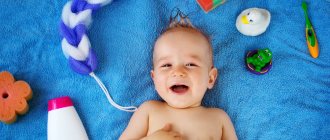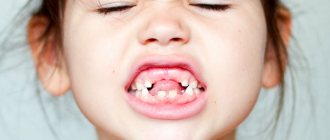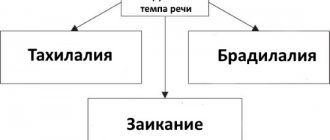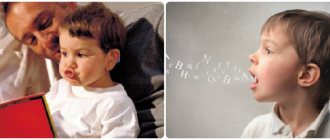The first year in a baby's life is very important. At this time, the child learns a lot - to sit, crawl, walk and, of course, talk. True, you should not expect that as soon as the baby turns one year old, he will speak fully. As a rule, by the end of the year the baby just begins to speak the first words that only parents can understand.
Nevertheless, the development of a child’s speech up to one year is a matter that can and should be addressed. Cooing, babbling and even screaming are ways to form speech. At this stage, you need to support the child by developing him as a whole, and not focusing on the linguistic area.
How to teach a child to speak before one year old
The development of speech in children under one year of age occurs in the complex development of the whole organism. A newborn has only a set of reflexes that gradually develop and turn him into a full-fledged personality. Speech is one of the important criteria for development. It is the result of coordinated activity of the brain, and the brain develops thanks to the activity of a child exploring the world in the first months of his life.
To speed things up, you can listen to the following tips:
- Talk constantly. From the first minutes, children absorb information about what they see and hear around them. Their hearing is already fully formed. You can talk about anything - what you dress him in, where you go, comment on any little things. Activities that accompany conversation promote faster understanding. After some time, the baby will be able to understand what they want from him.
- Repeat after your child. Usually children, even at such a tender age, try to say something. Often it resembles an endless repetition of one sound. This is how the baby trains diction. It would be great if his parents repeated after him. You can complicate the task by singing the familiar “zya-zya-zya” to the child. This way the baby will learn to keep the pace, which will also be useful for him in the further development of speech.
- Animal sounds. When your child communicates with animals, show what sounds these animals make. Is there a cat in the house? The child will quickly learn that she says “meow.” When the speech apparatus is sufficiently formed, the child will even be able to call the cat with the standard “kitty-kitty.” It’s even more interesting with dogs, as they are more friendly by nature. If there are no animals, you can reinforce the sounds with pictures;
- Train your baby's fine motor skills. Surely you have noticed that little children want to touch, grab, and crush everything? This is no accident. This is how the brain develops. By allowing your baby to play with cereals, sand, buttons and beads, you are doing him a good service, including accelerating the acquisition of speech. Naturally, all these exercises must be done under the supervision of parents, so that the inquisitive baby does not start eating sand or stuffing buttons into his nose.
- Organize communication with other children. Children can communicate with each other even more actively than with adults. They share their experiences, although often it looks like babble. If there are children in the company who already know how to speak, most likely the baby will imitate them. In addition, when playing with other children, the child gets pleasure, which is important for his development.
- Use sign language in doses.
It is easier for a child to show what he wants than to say. If this can even help right away (for example, when a baby points to a package of juice and the mother comments on what the juice is called), then in the future it is better to get the child to name the object.
Even with all this effort, you shouldn’t expect your baby to be quoting War and Peace by his first birthday. Usually the children with whom they work speak earlier, but in the same “gibberish.” Approach everything without fanaticism. Everyone has their own pace of development. The main thing is the health and well-being of the baby.
Constant training
Constant training is important for the development of the speech apparatus. That is why, during any interaction with a child, it is important to comment on what is happening. You can tell your baby about everything that is happening around. The more often the described actions are repeated, the faster the child will remember individual words, and then phrases. He most likely won’t be able to speak them yet, but he will understand.
For speech training to be successful, you need to follow some recommendations:
- Strike a balance between saying too much and too little. It is important to focus on one or two words.
- Highlight the names of objects and the actions that happen to them. Sentences should be short but meaningful.
- Talk about an object when the child has it in front of his eyes, or some action is performed with it.
- Read poems more often, but only emotionally and maintaining rhythm. The more emotionally you speak, the easier it is for the child to pay attention to the speech, and therefore to assimilate it.
- Use gesture games when talking and counting rhymes with clapping. Children after 6 months perceive them well.
- It is advisable to talk face to face. The baby follows the movement of his lips, remembering articulation and intonation.
- Ask questions. Even a simple question about whether you like the toy will do. The main thing is to wait for the reaction. It can be in any form - grumbling, smiling, even crying. If the baby enters into a dialogue, he needs to be motivated - praised, smiled, kissed.
You need to be in constant contact with your baby. Regular and systematic communication is the best way to speed up the development of his speech.
Expand your passive vocabulary
The child does not yet have an active vocabulary, because the baby simply does not know how to speak. But he can already recognize those things that he sees and uses every day. Of course, provided that parents use the tips described above.
A few more features of the passive dictionary extension:
- Regularly conduct “tours” of the house . If household items are familiar to you, then all this is new to your child. A regular TV remote can take several hours to use. Walk around the house with your baby, naming objects. For example, close and open the doors, turn the lights on and off, boil the kettle. These are everyday activities, but they will be very interesting for the baby, who will be able to learn many new words along the way.
- While walking on the street, show your little fellow traveler trees, benches, pine cones, a fountain, a house, and even an urn . The more objects he sees, the better.
- Name the parts of the body . The game will help the baby learn where his hands are, where his legs are, what kind of nose he has, etc. When the main elements of the face and body have been studied, you can tell what they are like - blue/green/brown eyes, long/short/straight/curly hair.
- Use games . For example, The world in the palm of your hand or We speak from the cradle. With the help of educational materials, your baby will speak much faster.
The expansion of passive vocabulary can be supplemented by looking at different pictures. The brighter and more interesting the pictures, the better.
Use simplified words
Babies cannot speak complex words. Their maximum is “ba ba ba,” that is, monosyllabic, frequently repeated constructions. If you want your child to learn to speak faster, it is better to name objects in the same simple words.
For example:
- dog - woof-woof;
- rain - drip-drip;
- goat - be-be;
- bell - ding-ding.
This simplification will not be excessive. For a child, simple words are the norm. Having learned them, the child will more actively develop speech. Their regular use will help prepare for more complex speech structures. Up to one and a half years, the introduction of simplified words is acceptable.
But it’s important not to overdo it here. Communicating with a child exclusively in simplified words will do more harm than good. It is better to use the full and simplified form of the word so that in the future the child can painlessly switch to standard speech. Retraining is too difficult a process.
https://youtube.com/watch?v=SFvwNmeqvIo
Roll calls
To teach a child roll calls, you need to know what sounds he already knows and likes to pronounce. Parents, as a rule, know all this, given that, having heard a new sound they like, the baby can repeat it for hours.
Knowing these syllables, say them in front of your child several times. Usually the baby reacts and begins to babble after the parent. If the child babbles on his own, repeat the new syllable after him. This way he will understand that you are reacting.
Then change the sounds and syllables yourself. The baby, having understood the essence of the game, will repeat sounds that are new to him. He may not succeed right away, but in any case, children really like such roll calls.
You can play roll call even if parents and children are in different rooms. The main thing is to pronounce the sounds loud enough. And there is no need to be distracted from everyday household chores. But there is advice - one lesson = one new syllable. At each roll call, syllables already learned can be repeated. And to maintain the child’s interest, it is worth using roll calls in poetic form.
For example, you've probably heard:
Geese, geese! Ga-ha-ha
Do you want to eat? Yes Yes Yes.
Development of fine motor skills of hands
Speech development in infants is influenced by games that involve fine motor skills. Scientists have long proven the relationship between fine motor skills and children’s ability to speak. The sooner the baby starts doing exercises to develop fine motor skills, the faster he will speak. The motor and speech centers of the brain are located nearby, and stimulation of one affects the functioning of the other.
Eastern practices say that there are points on the palms, the stimulation of which can affect the entire body. That is why you can do exercises with your baby’s fingers almost from birth.
But it is important to follow the following rules:
- You need to practice every day, devoting at least 2-3 minutes. More may not work, especially with very young children who sleep a lot and eat while they are not sleeping.
- It is better to choose the time to play while the baby is in a good mood;
- Be sure to praise the baby.
- The props used for games must be clean and safe. Kids may well taste an interesting little thing, and this should not cause allergic reactions or more serious problems.
- For the game it is better to use objects of different sizes and textures. They should differ in grip options so that kids learn to turn their hands in different directions.
You can massage your fingers, use a variety of rattles with a massage effect. Or buy toys that start singing or glowing after you press some buttons. If the toy also speaks, that’s great. But this accessory is suitable for children who are more than six months old.
Dr. Komarovsky: How to help a child learn to talk
The popular and respected doctor E. Komarovsky has his own vision of how to teach a child to speak. However, his opinion largely coincides with what we wrote about above. So, here is what Komorowski advises in order for a child to speak faster:
- You need to start in the womb - this means that you need to communicate with the child when he is still in his mother’s belly. Communication with an unborn child also stimulates speech development.
- Talk to your baby regularly—talk to your baby every day, all day long. Constant communication with your baby develops his brain and, accordingly, his speech.
- Connect words with images - name out loud the objects around you and your child, as this also helps the baby develop faster and connect words with images.
- Repetition is the mother of learning - when teaching your child a new word, repeat it over and over again for several days until he learns to pronounce it correctly.
- Ask your child questions - they will not only help the baby learn to speak and express his thoughts, but will also stimulate his brain, forcing him to think.
- Read fairy tales to your baby - Read fairy tales and stories to your child every day - this will introduce him to new words and develop his imagination. Also, regular reading will further instill in the child a desire to read independently.
- Help your baby develop through music - sing to your child or play good music or songs. Harmonious sounds are not only pleasant to the ear, but their repetition also develops the child’s speech apparatus. Music also helps develop the sense of rhythm and hearing.
- Do not encourage baby talk and mangled words - If you want your child to speak correctly, you should not talk to him in a childish way. This is only valid for the first 6 months. Talk to your child in normal speech, pronouncing words correctly.
Stages
If we consider the development of a child’s speech by month, we can distinguish several stages:
- Scream. From birth to 6-8 months.
- Booming. From 2 to 5 months.
- Babble. From 6 months to a year.
- First words. Up to two years.
These stages of speech development are very conventional. This means that they can shift by several weeks or months. However, it is this classification that makes it possible to notice if the child’s development differs from normal.
Dorechevaya
- Newborns already have certain vocal reactions - screaming, coughing, sneezing, yawning . Sometimes, towards the end of the first month, children begin to make individual guttural sounds - something like “ae”. The screaming period lasts about three months. It was at this time that the foundations of the protolanguage were laid. Children learn facial expressions, gestures, various manipulations, etc.
- In the second month of life, the baby hums and squeals if he likes something . A differentiation of the cry appears depending on the emotion it shows. Humming is part of the revitalization complex, and the sounds that babies make during this period are: “gi”, “ge”, “ege”, “agu”. Naturally, sounds do not take into account correlation, constancy, relevance, etc. In the third month, the child begins to pronounce intonation sounds.
- In the fifth month, babbling appears . At this stage, it is very important how developed the level of auditory perception is. The peculiarities of speech sounds and syllable formation begin to appear - the child pronounces syllables like “ma”, “ba”, “pa”, etc. Initially, these structures are unstable - they have different durations, the last segment is replaced (ma-ma-ma-boo).
- Prefaces appear at 7 months . This is a closed sequence of syllables united by accentuation. The sounds become constant, the child reacts to his name and listens to the speech of those around him.
- Subject related sounds . Formed by eight months. Children are able to understand individual, frequently spoken phrases. Can look for a familiar object if asked by an adult. By 9 months, a child’s passive vocabulary may contain several short phrases.
Despite its non-verbal nature, it is protolanguage that is the basis for the formation of intelligence and is actively used by children up to two years of age.
Pregrammatical
When a child reaches his first year, his speech, as a rule, already includes his first clearly pronounced words, like: mom, dad, grandma. As for understanding words, a baby going through the dogmatic stage already understands about 30 words. His first words are polysemantic in nature - that is, they sound the same, but mean very different concepts/things. Children have difficulty pronouncing beeps, making it difficult to understand what they are saying. But through constant repetition this is gradually corrected.
Between three months and one and a half years, vocabulary growth slows down, but children continue to master the intonation and rhythmic components of speech. Thanks to this, sounds cease to be similar. The child listens to the speech of adults and tries to liken his speech to what he heard. But usually, each spoken word can stand for an entire sentence. Speech is situational and emotional (children can shout and gesture very loudly).
By the age of two, the child continues to develop a vocabulary, including two- and three-syllable words. First, the syllable on which the stress falls is spoken, then the pre-stressed syllable and the unstressed one. As a result, most words are very difficult to make out. Regarding grammar, children begin to pronounce syllables correctly when their vocabulary is at least 50 words. This is where the next stage of speech development begins.
Mastering grammar
Children begin to go through this stage around the age of two. Up to 2 years and 2 months, children go through the stage of agrammatism, when they speak without formalizing their speech grammatically. Next, kids begin to identify morphemes and form words, albeit by analogy with those they already know. Sentences become three- and four-word. The child begins to talk about everything he sees, talks about his desires and experiences. In general, it says a lot, but it’s not always clear.
From 2 years and 3 months to 3 years, children develop professional vocabulary. Children construct sentences of 3-4 words, and can use familiar words in several grammatical forms. Children's speech changes qualitatively due to inclusion in the game. It becomes coherent and understandable.
From 3 to 7 years of age, vocabulary develops, when a child can use up to four thousand words in speech. A sense of language and grammatical skills are formed. Pronunciation is improving.
These periods vary from person to person, but for most children, speech development occurs this way.
General Tips
In developing a child’s speech, it is important to be guided by the general principle “Do no harm.” It must be remembered that each child develops according to his own individual model and it does not always adapt to the described stages of development. We recommend adhering to principles that apply generally to the entire process of raising and developing children.
- The principle of the game form. For a preschool child, the leading activity is play. The more interesting the activity is, the more involved the child will be in it. Don't force me to play. Instead, create interest.
- The principle of mutual dialogue. Talking with children is not a waste of time, as it might seem at first glance. Bring your child into dialogue, maintain a conversation with him, tell him and listen carefully. Communication is the most effective way to teach a child to speak early.
- The principle of problem acceptance. It is difficult to admit to yourself that a child has any problems. However, the sooner you start working on mistakes, the faster you will get results. Don’t be afraid to turn to professionals if you see that independent work is not bearing fruit.
- The principle of accepting individuality. Your child is already a separate person, even if he is just starting to stand on his own two feet. You shouldn’t compare him with his peers who are already reciting rhymes with all their might. Instead of criticizing, praise every achievement of your child and then he will definitely talk.
What affects children's speech development
Speech development is one of the most difficult, but also the most important stages in a person’s life.
The formation of the ability to express oneself is influenced by many factors, among which are:
- Auditory attention. Without well-developed hearing, children will not be able to learn speech, because in order to repeat something, they must first hear it. To develop auditory attention, parents should engage with their children. For example, let them listen to music, train them to understand where the sound comes from. In the latter case, rattles will help. In a conversation, you can use different intonations to develop an understanding that the child is being praised or, conversely, that you are dissatisfied with his behavior. In addition, changing intonation allows you to train the formation of speech tempo.
- Motor development. Language and motor development are closely related, as we have already discussed. Therefore, in order to develop the language component, it is advisable to use games that force the child to actively move. True, at such a young age it is difficult for a baby to control his movements, especially with regard to fine motor skills, which physiologically develop later than gross motor skills. And don’t forget about articulatory motor skills. Smiles, various “faces”, clicking of the tongue, etc. activates the muscles responsible for the correct formation of sounds.
- Intellectual growth. The intellectual development of a child directly affects the rate of his language development. There is an opinion among the common people that a stupid child will speak later than a smart one. In fact, the pace of a baby’s intellectual development can be accelerated. There are special techniques for this. Even ordinary games stimulate the baby's intelligence. The main thing is to work with the child systematically and not overload him, trying to “fashion” a child prodigy.
- Emotional development. Emotionality stimulates faster development of speech. This is why we instinctively talk to a child more emotionally than to adults. This helps him more accurately determine intonation and make him want to respond with emotion to emotion.
- Communication. A child will speak faster if he has someone to do it with. Communication with parents is, of course, good, but it will be useful for kids to communicate with other children. Therefore, it is advisable to go out with your child more often to playgrounds, etc.
The main rule is to work with children. The more effort you put into their development, the faster you will get the return. In infancy, children absorb information like sponges.
Features of practicing hissing sounds
To teach a child to correctly pronounce hissing sounds, you must first introduce whistling sounds. If a child in the fourth year of life has learned to pronounce whistling sounds, then there should be no problems with hissing sounds. You can install them with a few simple exercises.
- "Naughty tongue." The child sticks the tip of his tongue out of his mouth. Then he lightly slaps it with his fingers, while saying: “five-five-five.”
- "Delicious jam." The lower lip is pulled down so that the teeth are visible. And the tip of the tongue licks the upper lip, as if it is very sweet there. At the same time, the lower jaw should remain motionless during the exercise.
- “Hide the candy.” Mouth closed. Tighten your tongue and touch your left, then your right cheek. It's like there's candy hiding behind your cheek.
Repeat exercises at least 5 times.
Note! Producing the sounds of native speech is very important for children. It will help them not only make contact with their peers, but also better master the preschool and school curriculum. Parents have the power to help their children avoid difficulties in the future and put the sounds correctly in time.
What should a child say?
The development of speech in babies can be roughly divided by month:
| Age (by month) | What should a child say? |
| 1 – 1,5 | Vowel sounds with which the child reacts to speech addressed to him (o, a, u, ya, ay, ua). Babies sob as they exhale and listen to the sounds around them. They scream loudly. |
| 2–3 | A “revival complex” appears (they characteristically move their arms and legs when they see their mother). Speech becomes more guttural, and combinations of sounds appear—booming. The key manifestations of speech during this period are combinations of sounds like: a-a-a, a-a-gi, a-a-gu, a-ga. The baby makes sounds not only when in contact with someone, but also simply because he wants to. Can focus on the source of sound. |
| 3–5 | The full stage of humming begins. The child moves from vowel sounds to such sound combinations as gee, khy, agu, aga, ga, ege, aa. Moreover, the sound combinations are very bizarre and impossible to repeat. |
| 6 | Children begin to babble from the sound combinations “ha, ka, pa, ma.” Because they are constantly repeated, they begin to look like word patterns, although the “words” have more syllables than necessary. For example, “ma-ma-ma-ma, ba-ba-ba.” It's not a means of communication, at least not yet. |
| 7 | The child begins to connect objects and words denoting them. The words already differ in sound. The baby is fully babbling. |
| 8-9 | The baby is already starting to say ba-ba, ma-ma, etc. Playful behavior appears, accompanied by the use of various sounds. The child can identify any toys with certain sounds. |
| 10-11 | The child consciously pronounces simple words like “mom.” He has several words in his vocabulary that he can use to describe everything. |
| 12 | The baby already consciously uses about ten simple words, and understands even more. Can fulfill simple requests. Speech is accompanied by facial expressions and gestures. |
Depending on the conditions in which the baby develops and his personal characteristics, these stages may occur earlier or a little later. But thanks to such a clear picture of development, parents and doctors can understand if something is wrong with the child.
Speech development norms at 3 years and 5 months
Attentive parents always pay close attention to the significant details of their baby's speech. A three and a half year old child already has a decent vocabulary, consisting of 300–800 words. He uses all parts of speech of his native language: nouns, verbs, adverbs, adjectives, pronouns, numerals, conjunctions, particles and prepositions. When a baby plays, engages in productive activities, manipulates objects in his environment, he pronounces what he is doing.
For a child of four years of age, speech is a necessary condition for communicating with adults and peers. He almost does not use facial expressions or pointing gestures, preferring to say rather than show, actively achieving his goal with the help of words. A child can even fulfill multi-stage requests from adults: “First do this, and then that,” “First go there, and then bring that,” etc.
Children aged 3.5 years willingly listen to people read to them, carefully looking at the colorful illustrations in children's books. They can listen to their favorite fairy tale several times, repeating the most expressive turns and phrases.
Normally developing children aged 3 years and 5 months can not only repeat after adults, they are actively engaged in their own word creation. Children come up with their own words, unconsciously using the laws of their native speech. This process is lovingly described by Korney Chukovsky in the book “From Two to Five”:
Who speaks faster - a boy or a girl?
As a rule, girls start talking faster. According to various studies, boys speak fully 4-6 months later than girls. But this does not mean that they are developmentally delayed or have some kind of pathology.
There are several theories that explain this phenomenon:
Many scientists adhere to this version. According to it, boys have more of the hormone testosterone in the womb (indicators exceed those of girls several times). This hormone is involved in the formation of the central nervous system and affects the development of speech functions.
Biochemical.- Psychological-genetic. According to this version, communication skills have long been more necessary for the female sex. They were used in everyday life for communication in tribes and when raising offspring. Men were busy hunting and other activities that did not involve active verbal communication. It turns out that delayed speech development in boys is something of an archaism.
- Physiological. According to research, girls have more developed tactility and fine motor skills - this has a beneficial effect on the development of speech centers.
It is impossible to talk about the veracity of this or that theory, just as it is impossible to completely deny them. But the experience of many parents suggests that boys actually start speaking a little later.
Although, if a child, regardless of gender, speaks later than his peers, but otherwise develops normally, there is no need to worry about this. You can simply continue to study with your baby, replenishing his vocabulary. There are often cases when children, having accumulated a sufficient number of words, begin to speak quite coherently only a few months later than their peers, but no longer making their mistakes.
Who should you contact to identify general underdevelopment?
If a child does not speak at 4 years old, it is better to show him to several specialists at once:
⠀
- speech therapist-defectologist - will assess the severity of the speech disorder and suggest the direction of correctional work;
- ENT specialist - will help make sure that hearing is normal;
- a neurologist - will examine the child, get acquainted with the baby’s development chart to exclude organic damage and, if necessary, prescribe appropriate medications.
⠀
Often, a consultation with an experienced speech pathologist-speech pathologist is enough to determine ODD and begin correction, as in the case of our student Roma.
⠀
But if the speech therapist still recommends visiting other specialists, then you should listen.










